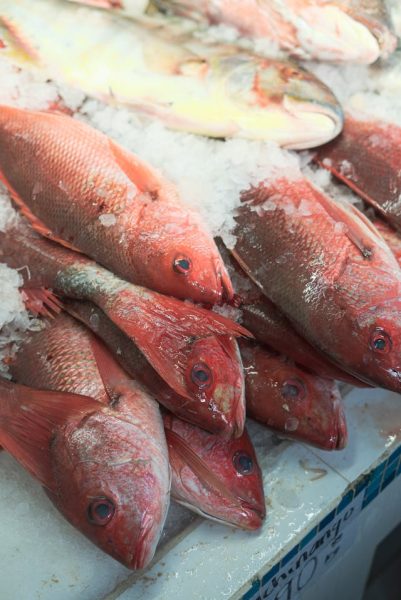Exploring the realm of seafood can feel overwhelming at times. When on the hunt for quality wild caught selections amidst a sea of choices and origins to consider! Having an eye for indicators is crucial in making informed decisions when it comes to choosing fresh and sustainably sourced seafood options that promise a delightful culinary journey.
Understanding Wild-Caught Seafood
Seafood that is caught in the wild comes from water sources. It has unique tastes and textures compared to seafood that is raised on farms. Wild-caught seafood is harvested directly from oceans, rivers, and lakes, supporting economies and helping maintain balance. Moreover, caught choices usually have intense flavors because of their diverse diets and natural environments. We discuss here some of the key points to ensure you cook the best seafood every day.
Key Points to Check When Buying Seafood
Recognize Freshness
The first step in the process is to determine if seafood is fresh or not based on perception. Fresh seafood typically carries a scent of the ocean that brings to mind a salty sea breeze. A strong fish-like smell usually indicates that the seafood has started to spoil. When inspecting fish quality, clear and lively eyes are a sign of freshness, whereas dull and sunken eyes hint at staleness.
Inspect Color and Texture
Colors and textures are signs of freshness when it comes to seafood products like fish fillets and crustaceans. Look for translucent flesh in fish fillets without any discoloration to ensure freshness. A glossy surface on the fillets indicates moisture levels. Vibrant shells on crustaceans show that they are still lively and fresh, while dull shells could mean they have been stored for a time.
Understand Labels and Certifications
If you want to buy wild-caught seafood online, check where your seafood comes from and its important quality. Labels and certifications can help with that information. Seafood that is sustainably sourced often has certifications from known organizations indicating fishing practices that safeguard marine environments. It’s an idea for consumers to learn about these labels so they can make environmentally conscious decisions when purchasing seafood.
Consider Seasonal Availability
The availability of caught seafood varies throughout the year, depending on the seasons. Native knowledge of peak times guarantees access to the choices. Promotes sustainable methods. Caught seafood frequently offers taste and quality because it follows natural life patterns. Exploring harvest schedules enables consumers to choose top-notch selections while encouraging consciousness.
Explore Local Markets
Local fish markets provide an opportunity to get your hands on caught seafood options straight from the source! Building connections with sellers helps create a sense of openness and confidence in your purchases. You have the chance to ask questions about how the catch was sourced and where it comes from, along with any guarantees of its freshness. Paying a visit to these markets in the morning could increase your odds of snagging the picks since new deliveries usually roll in at dawn.
Utilize Frozen Options
When fresh options are scarce, frozen seafood can be a substitute option. The taste and texture of products are preserved through quick freezing methods, along with their nutritional value. While choosing items, make sure the packaging is undamaged without any ice crystals or changes in color. Storing them correctly at certain temperatures helps prolong their shelf life and ensures they stay at their quality.
Check for Sustainability Practices
Maintaining practices is crucial for the well-being of marine ecosystems in the long run. Consumers ought to give preference to seafood obtained through eco methods like gear or responsible fishing quotas. Backing fisheries that uphold sustainability values plays a role in protecting our oceans and securing seafood resources.
Engage with Knowledgeable Staff
Engaging with seafood experts can make shopping for seafood more enjoyable and informative at the time. Customer service representatives and market sellers are usually well-versed in recognizing top-notch products. Inquiring about where the seafood comes from, the methods used for harvesting, and how it’s stored can provide information.
Experiment with Different Species
Diversifying seafood selections introduces diners to unique flavors and textures. Trying lesser-known species supports biodiversity and reduces pressure on popular fish stocks. This adventurous approach not only broadens culinary horizons but also promotes sustainable consumption patterns.
In Summary
Choosing seafood that has been caught in the wild requires observation and making well-informed decisions based on indicators of freshness and sustainability considerations found in local markets to support marine conservation efforts, which can lead to enjoyable seafood experiences with a sense of responsibility and satisfaction.


